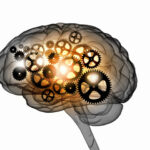
Post-Traumatic Stress Disorder, or PTSD, is arguably one of the most commonly misunderstood mental illnesses. Yet it is among the most serious if left untreated. The National Center for PTSD reports that witnessing and/or experiencing trauma is not uncommon. In fact, they estimate that approximately 60% of men (6 in 10) and 50% of women (5 in 10) will experience at least one trauma during their lifetimes. Among the most likely traumas to occur by sex, women have a greater chance of experiencing sexual trauma whereas men are more likely to witness other violent traumas such as accidents, assaults, and even death. While witnessing trauma does not mean that one is guaranteed to develop PTSD, it is believed that approximately 7-8% of people (7 or 8 out of 100) struggle with the disorder during a given year. This accounts for an estimated 8 million U.S. adults.
Five Common Myths About PTSD and Treating It
Although public awareness of PTSD has increased over the years, there still seems to be some pervading misconceptions about what exactly the disorder is and how it affects people. There is also some confusion regarding how to treat PTSD and its many possible symptoms, which range from feelings of loneliness and numbness to re-experiencing trauma through flashbacks, nightmares, and intrusive thoughts. Moreover, there is, still, an unfortunate stigma which appears to be associated with the disorder, which may be contributing to the misinformation circulating.
Because of this, it’s important to address some of the major myths that exist regarding PTSD, not only to gain a better understanding of this condition for ourselves, but also for those currently suffering from its symptoms. Below are 5 of the most frequently occurring myths surrounding PTSD.
1. Everyone Who Experiences Trauma Gets It
Not everyone who witnesses or experiences a traumatic event will develop PTSD. As evidenced previously by statistics, only 7-8% of individuals are likely to have the disorder. That being said, it is possible for anyone to react badly to trauma, and in doing so, develop PTSD. Whether or not someone will have PTSD as a response to trauma depends entirely on the individual and how they process the circumstances.
Having PTSD doesn’t mean that the individual inherently did something wrong, it just means that the events which they witnessed or experienced had a deep impact on them. Everyone deals with trauma differently, and for some, processing these thoughts and emotions may be more difficult than others, and will necessitate intervention both therapeutic and possibly medicinal.
2. Only Veterans Suffer from PTSD
Any individual who has experienced some sort of trauma can develop PTSD. While this can, and usually does, include veterans, it is in no way limited to that demographic. Trauma can be more than just combat-related atrocities. For some, a traumatic event may be witnessing domestic violence or a natural disaster, for others, it may be experiencing physical abuse or sexual assault. What constitutes as trauma varies from person to person, however any traumatic event can trigger the development of PTSD. There is no one-size-fits-all when it comes to what causes the disorder or how it affects the individual.
3. PTSD is a Sign of Weakness
One particularly harmful myth is that PTSD is a sign of weakness, or that the condition itself is really “no big deal.” That being said, PTSD has nothing to do with one’s mental strength. True, there are some factors which may place certain people at a greater risk for developing the disorder than others, but those aren’t always within the person’s own control. Certain things which increase risk include whether or not the individual was able to successfully “save” or remove themselves from the situation which caused them trauma, or whether or not they were able to get adequate social support. Those with a pre-existing history or anxiety may also be at higher risk.
People who have PTSD are not being over-dramatic. Assuming that PTSD isn’t as bad as those suffering are making it out to be is reductive and harmful towards those individuals. PTSD can impact all areas of a person’s life, including their relationships, employment, and their overall quality of life. For some, the symptoms, without proper treatment, can be so debilitating that they turn to drugs and alcohol, or worse, suicide, as an answer for their suffering. This would not be the case if the condition “wasn’t a big deal.”
4. PTSD is Just a Personal Problem
PTSD affects more than just the individual suffering from it. It can also impact relationships and how they communicate with others. As alluded to previously, it can negatively affect one’s ability to perform their job, leading to increased absences, loss of focus, and reduced productivity, to name a few. On a personal level, PTSD can make it hard for someone to connect with others like they used to, making them seem distant and avoidant. This can be especially harmful because those struggling with PTSD, just like those with other mental health disorders, need love and support from friends and family to help facilitate the healing process. However, maintaining those relationships with PTSD can be a challenge.
5. There are No Treatments for PTSD
Perhaps the most dangerous assumption about PTSD is that there are no treatments available for it. While it is true that there is no one pill that can cure PTSD, there are several medications available which can help afflicted individuals manage symptoms. Psychotherapy has also been proven to be greatly beneficial to those struggling with PTSD as it can provide the necessary education and skills to help manage its effects as well as understand its causes.




